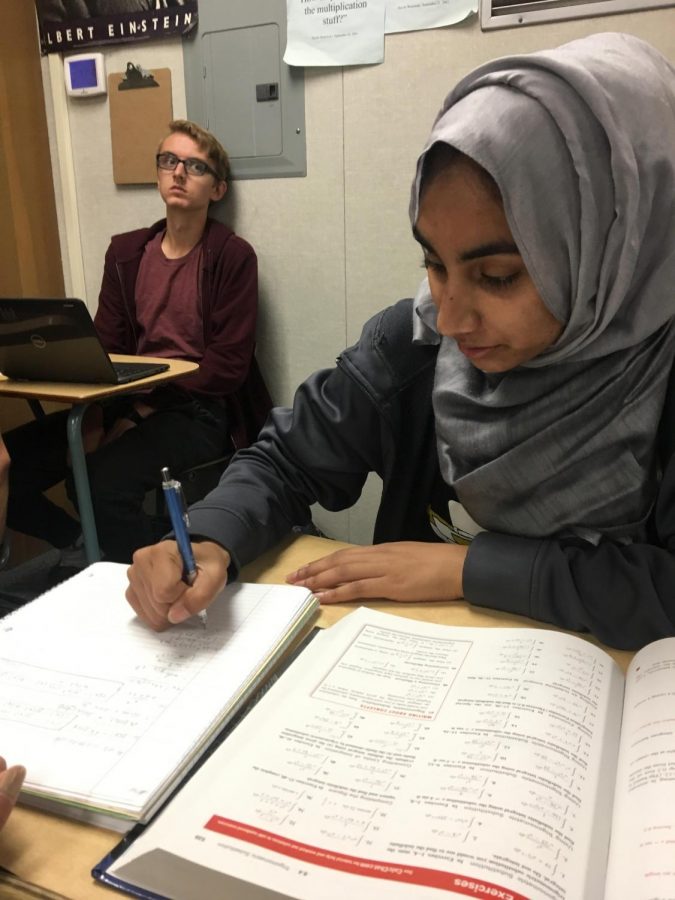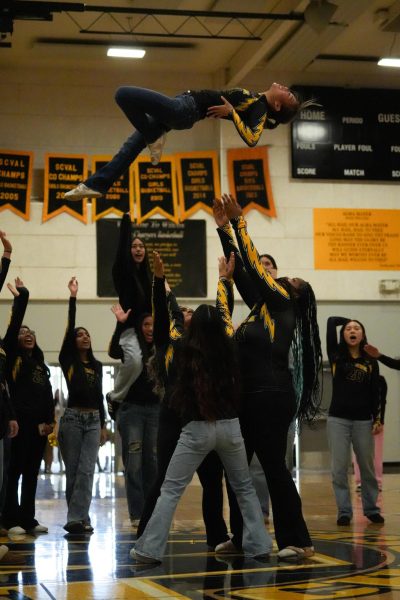The Faults of Secondary American Education
It was roughly a month ago when, making my habitual visit to the YouTube website, the bold title of a video caught my attention—“Valedictorian Shocks World with Brutally Honest Speech”. Fully prepared to be disappointed, I gave the thumbnail a click. At first, the video looked like a typical valedictorian speech: a brief introduction of the valedictorian, the hasty steps of the student to the podium, and a couple of charmingly awkward sentences to start it off. It was about forty seconds into the video, however, when the valedictorian made a surprising statement, admitting, “I have met and studied along- side individuals more diligent and talented than myself in the past four years.” A few sentences later, he made an interesting assertion: “The system, imposed upon us by tradition, has separated true education from academic achievement.”
Exiting the video, that daring claim stuck with me. Could it be that my current education does not reflect true learning? I thought deeply about my senior course load—one dominated by weighted classes and college-preparatory programs. It was in this period of reflection when I came to the same conclusion as the valedictorian’s in the YouTube video. The challenging courses of honors and advanced placement, ones seen as most admirable and closest to capturing true learning, represent hardly anything of what should be considered authentic education. It will be my objective, in the course of this article, to present the reader with the reasons be- hind why I firmly think this way, and how we ought to change the current system of demonstrating academic excellence.
It is important, however, that I make the following disclaimers to add limitations to the topic that I am about to address. The prospect of presenting a sound case calling for the renovation of the entire American education system within the confines of a single article is, as I will readily admit, slim:
- This article will be making an argument specifically against courses that are viewed by colleges in a positive light (primarily AP courses). Any- thing with regards to reforming non-weighted classes will not be discussed in this editorial.
- Because the proposals made in this article are largely theoretical in the domain of higher level secondary American education, the legal intricacies involved in implementing these ideas will not be considered.
- The intent of this article is to reveal what about the current system of high school education, imposed upon us by competitive colleges and organizations like the College Board, deviates from the praxis of true learning. Thus, this editorial should not be taken as a personal attack against the Santa Clara Unified School District or any of its teachers.
On The Concerning Lack of Motivation Among Wilcox AP Students
It needn’t be explored deeply for one to understand that motivation makes better students. For example, students who are motivated to read outside of class tend to write outstanding analytical es- says, and students who are motivated to program at home tend to craft elegant code for their computer science assignments. True learning—which I will define as the pursuit of knowledge, initiated by the student, to understand an unknown—is done most often by these driven students, who are generally more curious, inquisitive, and enthusiastic.
At Wilcox High School, the academic scene, as far as I can tell, is seriously deprived of genuine student motivation. For ex- ample, whenever a teacher provides the class with an additional assignment, students are quick to say that they would be “motivated” to complete it if they could receive a couple of extra-credit points in exchange. In the higher level mathematics classes most notably, what students submit for homework is often a couple pages of hastily written solutions that skip several problem-solving steps. Only when the teachers chastise the students, threatening to grade their homework more harshly, are the pupils “motivated” to show their work in full.
As one may have noticed in the above examples, Wilcox seems to have an abundance of high-performing students who are primarily motivated by points. In fact, there is an almost preternatural obsession with grades among the population of AP students. Every winter, students are frantically typing percentages into the RogerHub final grade calculator to estimate how well they have to perform on their midterms, and when a sub-optimal score is received on a test, students panic and demonstrate definite signs of mental distress.
This observation brings us to the first point made against the legitimacy of AP courses: weighted classes, in their supposed absolute importance when it comes to the college application, indoctrinate students with the idea that grades are god. Because the “straight A’s” status is worshipped by the student and parent communities, the traditional sense of motivation is supplanted by an artificial form of motivation based entirely on the sustainment of a strong grade-point average. As a result, students invest most of their energies into the meticulous practice of achieving the maximum number of points, wasting little time in activities that do not directly contribute to higher grades.
Grade-oriented thinking—and the lack of genuine motivation that comes along with it—is present outside of the academic domain. For example, I have noticed that the extracurricular scene at Wilcox struggles to maintain its appearance. Doubtless, participation in athletics and the notable clubs like CSF is strong—although it is worth mentioning that these commitments are, like AP classes, also looked upon fondly by colleges. The level of engagement in these activities, however, is far beyond the amount of participation in anything else that attempts to thrive at Wilcox. Most if not all of the career technical education clubs are inactive by the middle of second semester because of absent members and officers. The “Clubs at Wilcox” page in the yearbook never remains consistent because hopeful clubs take the spot of decommissioned clubs that had just established a year prior. The explanation for this depressing trend at Wilcox is, in fact, the same as the one presented earlier: students, lacking the initiative to pursue a hobby or academic interest they may have, choose to participate in well-established clubs, which are less “risky” and offer something that students can present to universities. It is disheartening when one realizes that many high-achieving students have a twisted priority system, where classes and even clubs are chosen according to the interests of colleges, not the interests of the student.
Beyond the grade-centered mindset that AP courses impose upon students, a far more oppressive cancer lurks within the class- rooms. This mentally debilitating practice of AP programs, namely, is the gross simplification of the creative and critical thinking processes in problem-solving to a systematic procedure that requires nothing but memorization. This sentiment is certainly not new; The Atlantic contributing writer John Tierney, in his article titled “AP Classes Are a Scam,” boldly proclaimed, “The AP curriculum leads to rigid stultification—a kind of mindless genuflection to a prescribed plan of study that squelches creativity and free inquiry.”
How could these college-level courses possibly stifle creativity? A few examples may provide the answer. In the mid-level English courses, such as English 10 Honors and AP English Language and Composition, the practice of composing an essay is, when you think about it, oftentimes almost offensively formulaic. Thesis “templates” are readily handed out to more-than-competent students, and the “claim-evidence-conclusion” structure of body paragraphs is beaten senselessly into every student’s head. Any deviation from the College Board-certified structure of an essay is frowned upon, and when students receive point deductions for attempting a different style, they understandably decide to submit to the AP standards. In the AP mathematics and social sciences courses, there are more “Don’t’s” than “Do’s” when it comes to crafting an FRQ: check- marks aren’t allowed in certain cases, labelling answers aren’t allowed in other cases, writing extensively is discouraged in most cases, and certain uses of words (second-person pronouns, “think”, “believe”, “sometimes”) are prohibited in almost all cases. The fact that incomplete essays (which deliberately exclude criteria with low point-value) can achieve near-perfect scores should alone be enough for a cause of concern.
In the end, AP courses reward students who are best at following College Board’s system. Where creative projects and truly interesting work used to happen is now an intellectually desolate place of analyzing essays that scored 9’s, reading mind-numbingly dull crash course books, and practicing the best “strategies” to demonstrate comprehension of material. It is a sad reality that AP education resembles more a job interview than actual learning.
Perhaps by now, it makes reasonable sense that AP courses, in its one-dimensional teaching style, not only ignores creativity but actively shuns it, thereby failing to cultivate motivation among students. There still must be some AP advocates, however, who have this thought in their heads: it is simply difficult to train students to solve or write something creatively and coherently. At the moment, I am in agreement with these advocates—of course we cannot expect students to demonstrate ingenuity in the current academic environment. For students to experience true learning, we can’t settle for a compromise that keeps AP programs intact. To do away with the “grade is everything” mindset, and to liberate students from intellectually oppressive practices, a complete and total separation from the College Board curriculum must take place.
College Board: The “Non-Prof- it” Corporation
Before we discuss how AP courses ought to be replaced, it may be best to briefly present the reader with an honest description of the non-profit organization that College Board is. If the reader already knows about the less-than-scrupulous practices of College Board or is simply not interested, this section can be skipped.
When AP programs were first introduced to the United States in the 1950s, their intentions were quite clear-cut: to prepare students for demanding college and post-secondary work, rigorous, college-level education should be made available at American high schools. During this time, perhaps due to the war on science and education with the Soviet Union, the College Board worked earnestly to make AP exams available to any industrious student—for a ten dollar fee, anyone could take as many tests as he or she would like.
Nowadays, without any serious moral or political obligations, the College Board has made a legitimate business out of what was once an honest and honor- able practice. According to Prep- Scholar, the leading blog site for explaining the college process, the cost of taking a single AP exam was $91 (a dramatic 810% increase) in 2015, and even with the assistance of financial aid, students were required to pay a “reduced” rate of $60. Beyond the realm of AP exams, the SAT tests, as many of our fellow juniors and seniors would know, cost a similar amount of money to take. But, even if you pay for these tests, colleges will not know your scores until you’ve entered your credit card number for the delivery fee. This also has as catch—if you put off sending your test results until the last moment, the College Board offers a “Rush Reporting” option for $31 (which, according to calculations made by PrepScholar, speeds the one-month process of sending scores by a mere four days. This is mentioned nowhere on the College Board website). Even if these costs aren’t off-putting, it is odd that an organization would charge students for score reports that are delivered digitally, not physically.
When the numbers are all added together, the result is simply appalling. In 2017, College Board’s total revenue amounted to roughly 1.12 billion dollars. According to 2011 calculations, performed by John Tierney and presented by Nonprofit Quarterly, the College Board witnessed a “profit” of 9.9%—a number that many for-profit corporations struggle to attain. Based on reports published by Americans for Educational Testing Reform, College Board’s CEO received a salary of 1.3 million dollars in 2009, and its nineteen executive members in the New York branch earned more than $300,000 each.
Perhaps, when the monetary factor is considered, the reader can better understand why the College Board so earnestly promotes its standardized tests, and why it wants to keep its malodorous feet in the pool of high school education.
What Can be Changed?
If Wilcox High School, in a spurt of heroic daringness, cuts ties with the College Board, the academic field, plucked clean of AP courses, will become a fertile landscape of possibilities. It would be foolish, however, to hastily fill the open classrooms with arbitrary classes. The committee brainstorming these highly-important courses should follow these criteria, or at least some rendition of them:
- The new classes should reflect true learning.
- The new programs should cultivate genuine motivation among students.
- Students should be tested on their application of learned material, not memorization.
- Factual retention must come second to ingenuity and critical thinking.
Designing a course that faithfully follows all four of the above stipulations may sound like a herculean task. If the administration and district, however, might be willing to listen to the humble
suggestions of this writer, then this initiative may be less daunting.
It is simple enough to recognize that students’ interests are best understood by the students themselves. Thus, the most straightforward solution that addresses all four of the previously mentioned criteria is giving students greater freedom to choose what they want to study. This “academic freedom”, specifically, could take the form of end-of-the-year projects, where the most diligent students participate in research they are especially passionate about.
This idea, which may seem outlandish and vague, is actually practiced in several academically-rigorous high schools. Basis Independent, a highly competitive STEM school in San Jose, is one
example. In a conversation with Stephen Zhu, a senior at Basis Independent Silicon Valley, he described how every high schooler participates in a term project at the end of the school year. These term projects, which have a diverse range of topics that include game theory, study abroad opportunities, electrochemistry, and even tasting different cuisines, are greatly looked forward to by Basis students, and they elevate the interaction between the professors who lead the term projects and students to a new level. Self-research is another option for Basis students who cannot quite find a research topic that suits their academic interest. Zhu also explained that seniors are given their last trimester off to pursue highly personalized senior projects. Every twelfth grader, usually in the form of an internship or study abroad program, commit to a real-world research project as away of experiencing true academic endeavour and exercising their own independence. Zhu, as an intern, is currently working on an image recognition program that distinguishes one cut of raw meat from other cuts.
The school, which plays a secondary role in these projects,mainly provides the resources and internship opportunities that students may be struggling or unable to find. Final grades are minimally affected by these research opportunities, with consequences given only to those who deliberately abuse the academic freedom that Basis Independent bestows upon
them.
Even if Wilcox High School does not completely adopt this ambitious agenda, aspects of it could be implemented or modified. For example, couldn’t the school establish a system that allows a group of students, backed by a dedicated teacher, to propose a curriculum for a new elective? Using whatever resources that Wilcox may have, couldn’t a preliminary research program, which perhaps allows a select number of driven students to opt out of finals in exchange for participating in a term project, be set up? Since we are in the heart of Silicon Valley, why don’t we integrate internship opportunities into the STEM and CTE courses at Wilcox (and perhaps allow educators to dedicate an entire unit to real-world work experience)? With the right mindsand people, all of this could be more than just hopeful ideas.
What could be done about the wretched, grade-oriented mindset? Well, in the case that that still persists in the absence of AP courses (immediate disengagement from this mode of thinking is likely difficult), the school can simply put an upper limit on the GPA scale. If the maximum grade-point average that anyone could attain is a 4.25 (for example), then even the most adamant grade enthusiasts would be comfortable taking non-weighted courses that stirs their interests. Fortunately, the Wilcox administration is already working to make this happen. In an interview with Mr. Michael La Fleur, the head counselor of Wilcox High School, he assured that the administration is trying to find a solution that balances academic rigor with student passions. The plan they are presently considering is the implementation of a UC GPA system, which caps the number of weighted classes a student can take and excludes certain classes from GPA calculations.
Concluding Remarks
If the concern for doing away with AP courses is that the move is too avant-garde, I am pleased to inform the school that there are already precedents. Last year, eight schools in the Washington area—Georgetown Day, Holton Arms, Landon, Maret, National Cathedral, Potomac, St. Albans, and Sidwell Friends—made a joint statement announcing their decision to eliminate AP classes from their curricula by 2022. Part of their declaration reads: “We are convinced that focusing on a timed standardized test does not promote inquiry or higher-level discussion… Moving away from AP courses will allow us to offer a wider variety of courses that are more rigorous and enriching… and demonstrate respect for students’ intellectual curiosity and interests.” In a report that the schools published after conducting a survey on 150 highly-competitive colleges, the admission officers, who agreed that AP classes are a lot less noteworthy on the college application now than before, assured that eliminating AP programs would have “no adverse impacts on [the schools’]
students.” The entire statement can be read here: https://bit.ly/2GyPaPj
As a member of the Wilcox community, I, along with anyone who has thus far agreed with the content of this article, request the administration to hold a series of discussions, comprised of administrators, teachers, and students, that address the fate of AP courses at this high school. When I walk the grounds of this school as an alumnus, it would be my greatest joy to see students in excited chatter about one of their classroom projects or electives, not having cheerless conversations about dreaded AP exams or tests. Let us be one of the first schools in our state to embrace and recognize the potential of true learning.






